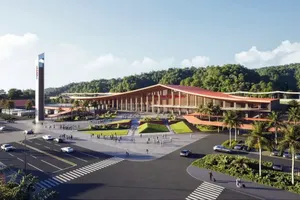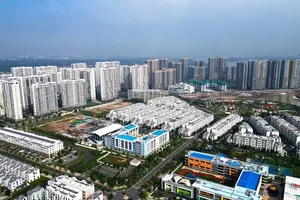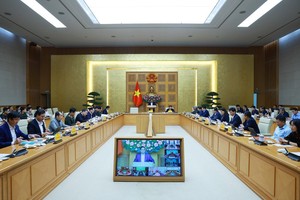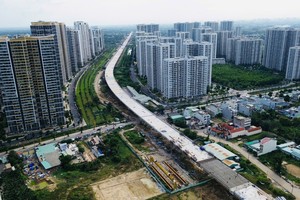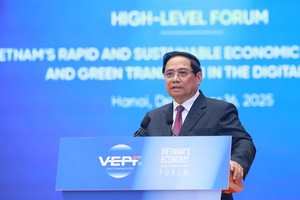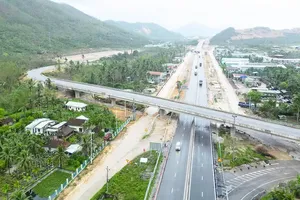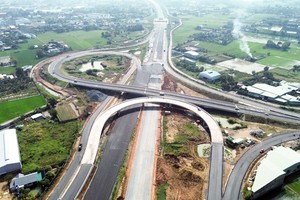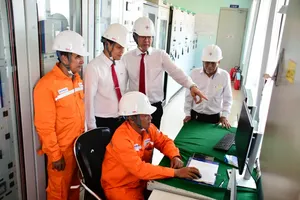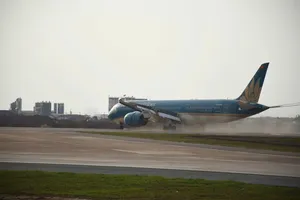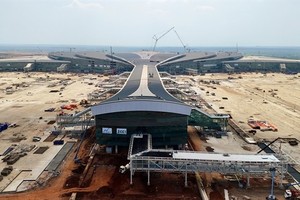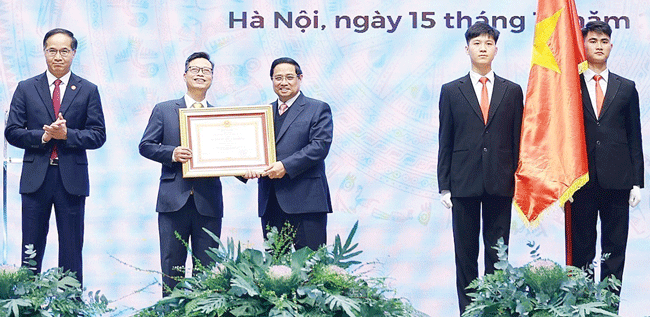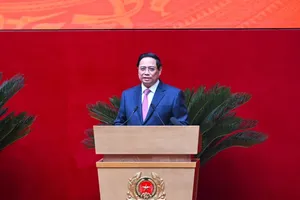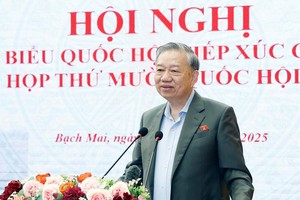
According to the Transport Ministry, in 2024, Vietnam will have 23 traffic projects completed and open to the public, mostly on the road. Among them, the two sub-projects of Dien Chau – Bai Vot and Cam Lam – Vinh Hao in the North – South Expressway project (East side) are expected to operate at the end of this quarter, increasing the total of available expressway length to more than 2,000km.
There are two expected projects to link the Northern mountainous areas and to improve weak bridges on national highways, along with the construction of five bypasses for the large cities of Hoa Binh, Cao Bang, Dong Hoi (in Quang Binh Province), Buon Ma Thuot, and Ba Don (in Quang Tri Province).
A series of degraded national highways possessing high risks of accidents and congestion will be upgraded, the prominent of which is the bypass route for Cao Lanh City (in the project to upgrade National Highway No.30 – the section passing Cao Lanh – Hong Ngu) to be completed this year in order to reduce the travelling time from HCMC to Can Tho City.
The project to increase traffic connection in the Central Highlands is for the upgrade of 127km on National Highway No.19 and building of 27-35km of a bypass, receiving the total investment of US$156 million. It is planned to finish this June.
The 12 sub-projects in the North-South Expressway project (second stage) will add another 29km into the current network to fulfill the goal of have 3,000km of expressway in 2025. The total finished work reaches about VND21 trillion ($860 million), accounting for 21 percent of the contract value, right on schedule to be completed by June 30, 2025.
Minister of Transport Nguyen Van Thang informed that his ministry is facing tough challenges when simultaneously launch various key projects nationwide. He therefore asked that project management boards and investors mobilize all possible resources to keep up with the progress.
“The second stage of the North-South Expressway project has more advantages than the first one, so relevant units must make good use of them to maintain the progress and ensure the quality, safety. The main route, frontage roads, and local ones must be taken care of equally. At present, land clearance and construction material shortage are two major issues for the local authorities to address”, said Minister Thang.
Director Le Quyet Tien of the Transport Construction Investment Management Authority (under the Transport Ministry) share that more inspection and monitoring of the construction sites will be done to urge contractors and consultants to accelerate their progress.
Special attention will be paid to public investment disbursement, with a priority to the projects scheduled to finish this year. This task is one criterion to evaluate the level of mission completion this year for unit leaders. Also, contractors and consultants are asked to allocate sufficient financial, human, and equipment resources to ensure both the progress and quality of all projects, especially key ones.
In addition, the management board of each project must carefully review cases of consultants and leaders not fulfilling their duty in order to deliver punishments. If the board directors are not able to fulfill that mission, they will earn a position transfer by the Transport Ministry.
Finally, the Transport Ministry requested cooperation among relevant localities to tackle any arisen problems in land clearance, infrastructure relocation, material supply so as to accelerate the construction progress.
Lately, Deputy Director Huynh Ngoc Thanh of the Transport Department of Binh Thuan Province reported the case of 36 local roads damaged during the time building the expressway in the province. Accordingly, some are still not addressed, and thus negatively affecting local traffic.
Proposals have been made about the connection of the lighting system to the power source to ensure safety for inhabitants there. The contractors of the two expressways have also been asked to speed up the rest of the projects and build rest stops and gas stations to serve passengers and drivers.
After checking current 4-lane expressways with the speed limit of 80km/hour, the Vietnam Road Administration reported that nine of them are eligible to increase this limit to 90km/hour for sedans, passenger vehicles of up to 30 seats (excluding buses), and trucks of up to 3.5 tonnes.
In related news, Da Nang City yesterday held grand opening ceremonies for its three key traffic projects of improving Provincial Highway No.601, DH2 route, and Western Ring Road No.2.
The first one is 36km long and links to Provincial Highway No.602 and Thua Thien – Hue Province on each end. Its total investment is VND725 billion ($29.7 million). DH2 route is 9km long and forms connections among National Highway No.14G, Provincial Highway No.602, local residential areas in the North, West, and Southwest, as well as the Hoa Lien – Tuy Loan Expressway, the Da Nang – Quang Ngai Expressway. Western Ring Road 2 is 4.6km long, running from Road No.8 of Hoa Khanh Industrial Park to Hai Van – Thuy Loan Bypass.
